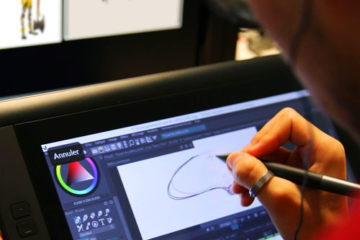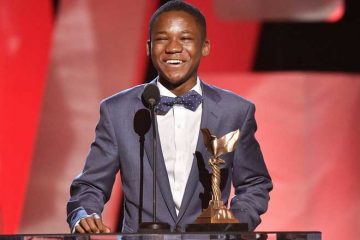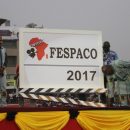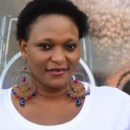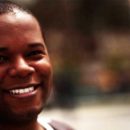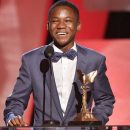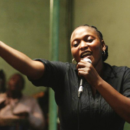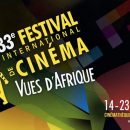marie curie : biographie
But what of that? [24][43] That month the couple were invited to the Royal Institution in London to give a speech on radioactivity; being a woman, she was prevented from speaking, and Pierre Curie alone was allowed to. [24] Albert Einstein reportedly remarked that she was probably the only person who could not be corrupted by fame. It depicted an infant Maria Skłodowska holding a test tube from which emanated the elements that she would discover as an adult: polonium and radium. Entities that have been named in her honour include: Several institutions presently bear her name, including the two Curie institutes which she founded: the Maria Sklodowska-Curie National Research Institute of Oncology in Warsaw, and the Institut Curie in Paris. [14] Maria's mother Bronisława operated a prestigious Warsaw boarding school for girls; she resigned from the position after Maria was born. On the experimental level the discovery of radium provided men like Ernest Rutherford with sources of radioactivity with which they could probe the structure of the atom. The physical and societal aspects of the Curies' work contributed to shaping the world of the twentieth and twenty-first centuries. Published 15th June 2012. Her paper, giving a brief and simple account of her work, was presented for her to the Académie on 12 April 1898 by her former professor, Gabriel Lippmann. Le portrait de Marie Curie Je m'appelle. [83] Cornell University professor L. Pearce Williams observes: The result of the Curies' work was epoch-making. “I believe international work is a heavy task, but that it is nevertheless indispensable to go through an apprenticeship in it, at the cost of many efforts and also of a real spirit of sacrifice: however imperfect it may be, the work of Geneva has a grandeur that deserves our support.”. Marie Curie pushed back many frontiers in science, and at the same time set a new bar for female academic and scientific achievement. [24][83] Having received a small scholarship in 1893, she returned it in 1897 as soon as she began earning her keep. She later got a degree in Maths, finishing second in her school year. [31][41], In December 1903, the Royal Swedish Academy of Sciences awarded Pierre Curie, Marie Curie, and Henri Becquerel the Nobel Prize in Physics, "in recognition of the extraordinary services they have rendered by their joint researches on the radiation phenomena discovered by Professor Henri Becquerel. [29][30], In 1897, her daughter Irène was born. Mon père est professeur de physique. In her later years, she headed the Radium Institute (Institut du radium, now Curie Institute, Institut Curie), a radioactivity laboratory created for her by the Pasteur Institute and the University of Paris. The element was soon in high demand, and it began industrial scale production. [74] She had carried test tubes containing radioactive isotopes in her pocket,[76] and she stored them in her desk drawer, remarking on the faint light that the substances gave off in the dark. [50] Her daughter later remarked on the French press' hypocrisy in portraying Curie as an unworthy foreigner when she was nominated for a French honour, but portraying her as a French heroine when she received foreign honours such as her Nobel Prizes. [66], Led by Curie, the Institute produced four more Nobel Prize winners, including her daughter Irène Joliot-Curie and her son-in-law, Frédéric Joliot-Curie. [13][21] While working for the latter family, she fell in love with their son, Kazimierz Żorawski, a future eminent mathematician. Three radioactive minerals are also named after the Curies: This page was last edited on 8 March 2021, at 22:06. She carried out the first research into the treatment of tumors with radiation, and she founded of the Curie Institutes, which are important medical research centers. The Institute's development was interrupted by the coming war, as most researchers were drafted into the French Army, and it fully resumed its activities in 1919. Marie understood that X-ray machines would be able to locate shrapnel, enabling better treatment for soldiers. Le 7 novembre 1867, à Varsovie, la capitale de la Pologne. [85], In 1995, she became the first woman to be entombed on her own merits in the Panthéon, Paris. She provided the radium from her own one-gram supply. 3 MARIE CURIE BIOGRAPHY 770L MARIE CURIE CHEMISTRY, PHYSICS & RADIOACTIVITY Born November 7, 1867 Warsaw, Poland Died July 4, 1934 Savoy, France By Michelle Feder, adapted by Newsela In 1897, Marie Curie began a series of experiments in the science of radioactivity. [60] She said: I am going to give up the little gold I possess. [29] He demonstrated that this radiation, unlike phosphorescence, did not depend on an external source of energy but seemed to arise spontaneously from uranium itself. By 1898 the Curies had obtained traces of radium, but appreciable quantities, uncontaminated with barium, were still beyond reach. For their discovery, they were awarded the Davy Medal (Britain) and the Nobel Prize in Physics in 1903. "[54] She was the first person to win or share two Nobel Prizes, and remains alone with Linus Pauling as Nobel laureates in two fields each. See her signature, "M. Skłodowska Curie", in the infobox. Maria Salomea Skłodowska naît à Varsovie, alors dans l'Empire russe, d'un père d'origine noble (herb Dołęga), professeur de mathématiques et de physique, et d'une mère institutrice. Marie Curie (1867 – 1934) was a Polish scientist who won a Nobel prize in both Chemistry and Physics. [16][22], At the beginning of 1890, Bronisława—who a few months earlier had married Kazimierz Dłuski, a Polish physician and social and political activist—invited Maria to join them in Paris. Walking across the Rue Dauphine in heavy rain, he was struck by a horse-drawn vehicle and fell under its wheels, causing his skull to fracture. One of which she named polonium after her home country. [13], To prove their discoveries beyond any doubt, the Curies sought to isolate polonium and radium in pure form. Both of Curie’s parents were educators. [26] That same year, Pierre Curie entered her life: it was their mutual interest in natural sciences that drew them together. [31][33] She began a systematic search for additional substances that emit radiation, and by 1898 she discovered that the element thorium was also radioactive. Poland had been partitioned in the 18th century among Russia, Prussia, and Austria, and it was Maria Skłodowska Curie's hope that naming the element after her native country would bring world attention to Poland's lack of independence as a sovereign state. Petite biographie. [16] This award was "in recognition of her services to the advancement of chemistry by the discovery of the elements radium and polonium, by the isolation of radium and the study of the nature and compounds of this remarkable element. She was also the first woman to win a Nobel Prize. In 1967, the Maria Skłodowska-Curie Museum was established in Warsaw's "New Town", at her birthplace on ulica Freta (Freta Street). Coppes-Zantinga, A. R. and Coppes, M. J. Due to financial problems in her family, she started teaching to earn money and due to the only male- university in Warsaw she continued her studies secretly in a ‘free University’ including some of the women workers in her classes. The onset of World War I in 1914, led to Marie Curie dedicating her time to the installation of X-ray machines in hospitals. [14] She died of tuberculosis in May 1878, when Maria was ten years old. In 1893, she was awarded a degree in physics and began work in an industrial laboratory of Gabriel Lippmann. She yearned to be able to teach fellow Polish woman who were mostly condemned to zero education. Maria Sklodowska, later known as Marie Curie, was born on November 7, 1867, in Warsaw (modern-day Poland). French physicist Pierre Curie was one of the founding fathers of modern physics and is best known for being a pioneer in radioactive studies. Her likeness or name has appeared on several artistic works. Einstein encouraged her during one of the worst years of her life. [48] The initiative for creating the Radium Institute had come in 1909 from Pierre Paul Émile Roux, director of the Pasteur Institute, who had been disappointed that the University of Paris was not giving Curie a proper laboratory and had suggested that she move to the Pasteur Institute. [18], Władysław Skłodowski taught mathematics and physics, subjects that Maria was to pursue, and was also director of two Warsaw gymnasia (secondary schools) for boys. [64] In Poland, she received honorary doctorates from the Lwów Polytechnic (1912),[97] Poznań University (1922), Kraków's Jagiellonian University (1924), and the Warsaw Polytechnic (1926). [49][64] These distractions from her scientific labours, and the attendant publicity, caused her much discomfort but provided resources for her work. Related Biographies. [44] Meanwhile, a new industry began developing, based on radium. Marie Skłodowska Curie (/ˈkjʊəri/ KEWR-ee;[3] French: [kyʁi]; Polish: [kʲiˈri]), born Maria Salomea Skłodowska (Polish: [ˈmarja salɔˈmɛa skwɔˈdɔfska]; 7 November 1867 – 4 July 1934), was a Polish and naturalized-French physicist and chemist who conducted pioneering research on radioactivity. [21] In early 1889 she returned home to her father in Warsaw. Maria declined because she could not afford the university tuition; it would take her a year and a half longer to gather the necessary funds. Marie Curie was known for her modest and frugal lifestyle. [24], Curie's quest to create a new laboratory did not end with the University of Paris, however. Maria Salomea Skłodowska–Curie (Marie Curie) (7 November 1867 – 4 July 1934) was a Polish physicist, chemist and feminist. [24][31], The [research] idea [writes Reid] was her own; no one helped her formulate it, and although she took it to her husband for his opinion she clearly established her ownership of it. Pierre was smitten with the young Marya and asked her to marry him. [24][31][32], Curie's systematic studies included two uranium minerals, pitchblende and torbernite (also known as chalcolite). Marie Curie at the Internet Movie Database – Animated biography of Marie Curie on DVD from an animated series of world and American history – Animated Hero Classics distributed by Nest Learning. [19] The deaths of Maria's mother and sister caused her to give up Catholicism and become agnostic. At an early age she became committed to the ideal of Polish independence from Russia – who at the time were ruling Poland with an iron fist, and in particular, making life difficult for intellectuals. [88] In 1920 she became the first female member of The Royal Danish Academy of Sciences and Letters. [64][65] In 1922 she became a fellow of the French Academy of Medicine. Marie Skłodowska-Curie, nascida Maria Salomea Skłodowska (Varsóvia, 7 de novembro de 1867 — Passy, 4 de julho de 1934), foi uma física e química polonesa naturalizada francesa, que conduziu pesquisas pioneiras sobre radioatividade. Radium was discovered to have remarkable impacts. In 1935, Michalina Mościcka, wife of Polish President Ignacy Mościcki, unveiled a statue of Marie Curie before Warsaw's Radium Institute; during the 1944 Second World War Warsaw Uprising against the Nazi German occupation, the monument was damaged by gunfire; after the war it was decided to leave the bullet marks on the statue and its pedestal. Born Maria Sklodowska in Poland on November 7, 1867, to a father who taught math and physics, she developed a talent for science early. Marie Curie En 1891 partió hacia París, donde cambió su nombre por Marie. Pediatr. Marie Curie Biography Marie Curie (1867 – 1934) was a Polish scientist who won a Nobel prize in both Chemistry and Physics. She opened the doors to the fight against various cruel diseases. Elle est la benjamine d'une famille de trois sœurs, Zofia (1863-1876), Bronisława (Bronia) Dłuska (1865-1939) et Helena Szalay (1866-1961), et un frère, Józef Skłodowski (1863-1937). Madame Curie was instantly popular; in many countries including the United States, it was a [24] The Curies did not have a dedicated laboratory; most of their research was carried out in a converted shed next to ESPCI. After Russian authorities eliminated laboratory instruction from the Polish schools, he brought much of the laboratory equipment home and instructed his children in its use. [49][54] She was appointed Director of the Curie Laboratory in the Radium Institute of the University of Paris, founded in 1914. Fifteen years earlier, her husband and his brother had developed a version of the electrometer, a sensitive device for measuring electric charge. Elevée dans une famille où linstruction à une grande importance, elle réussit brillamment ses études secondaires, et rêve détudier les sciences. [16] In an unusual decision, Curie intentionally refrained from patenting the radium-isolation process so that the scientific community could do research unhindered. Curie was also proud to participate in the newly formed League of Nations, through joining the International Commission for Intellectual Cooperation in August 1922. She made ground-breaking work in the field of Radioactivity, enabling radioactive isotypes to be isolated for the first time. As the first of the Curie family legacy of five Nobel Prizes, she was the first woman to win a Nobel Prize, the first and the only woman to win the Nobel Prize twice, and the only person to win the Nobel Prize in two scientific fields. [49][56] Later, she began training other women as aides. Marie Curie1867 - 1934See a related article at Britannica.com:http://www.britannica.com/EBchecked/topic/146871/Marie-CurieAll content is … Elle s’appelle alors Marya Sklodovska. If you’ve ever seen your insides on an x-ray, you can thank Marie Curie’s understanding of radioactivity for being able to see them so clearly. [60] It is estimated that over a million wounded soldiers were treated with her X-ray units. They did not realize at the time that what they were searching for was present in such minute quantities that they would eventually have to process tonnes of the ore.[36], In July 1898, Curie and her husband published a joint paper announcing the existence of an element they named "polonium", in honour of her native Poland, which would for another twenty years remain partitioned among three empires (Russian, Austrian, and Prussian). [14] He was eventually fired by his Russian supervisors for pro-Polish sentiments and forced to take lower-paying posts; the family also lost money on a bad investment and eventually chose to supplement their income by lodging boys in the house. [45] The award money allowed the Curies to hire their first laboratory assistant. [13][21][23], In late 1891, she left Poland for France. [89] On 7 November, Google celebrated the anniversary of her birth with a special Google Doodle. He was a renowned Chemist, who had conducted many experiments on crystals and electronics. [24] In Paris, Maria (or Marie, as she would be known in France) briefly found shelter with her sister and brother-in-law before renting a garret closer to the university, in the Latin Quarter, and proceeding with her studies of physics, chemistry, and mathematics at the University of Paris, where she enrolled in late 1891. In testing the product, Marie suffered burns from the rays. [21] His parents rejected the idea of his marrying the penniless relative, and Kazimierz was unable to oppose them. [49] A month after accepting her 1911 Nobel Prize, she was hospitalised with depression and a kidney ailment. He soon earned a doctorate and pursued an academic career as a mathematician, becoming a professor and rector of Kraków University. [24] The shed, formerly a medical school dissecting room, was poorly ventilated and not even waterproof. Born: November 7, 1867 Warsaw, Poland Died: July 4, 1934 Sancellemoz, France Polish-born French physicist The Polish-born French physicist Marie Curie invented the term "radioactivity" and discovered two elements, radium and polonium. [49] In 1921, she was welcomed triumphantly when she toured the United States to raise funds for research on radium. [55] She visited Poland in 1913 and was welcomed in Warsaw but the visit was mostly ignored by the Russian authorities. Their remains were sealed in a lead lining because of the radioactivity. There then followed four years of extensive study into the properties of radium. Marie Curie was the first woman to be awarded a Nobel Prize. She was the first woman professor at the University of Paris. [11] In addition to her Nobel Prizes, she has received numerous other honours and tributes; in 1995 she became the first woman to be entombed on her own merits in Paris' Panthéon,[12] and Poland and France declared 2011 as the Year of Marie Curie during the International Year of Chemistry. She did research on radioactivity. [88] An artistic installation celebrating "Madame Curie" filled the Jacobs Gallery at San Diego's Museum of Contemporary Art. Marie Curie became one of the most celebrated scientists in history. [39], If Curie's work helped overturn established ideas in physics and chemistry, it has had an equally profound effect in the societal sphere. "[16], On 26 July 1895, they were married in Sceaux;[28] neither wanted a religious service. The success of Marie Curie also brought considerable hostility, criticism and suspicion from a male-dominated science world. In Pierre, Marie had found a new love, a partner, and a scientific collaborator on whom she could depend. With her husband Pierre Curie, Marie’s efforts led to the discovery of polonium and radium and, after Pierre’s death, the further development of X-rays. "[36] On 14 April 1898, the Curies optimistically weighed out a 100-gram sample of pitchblende and ground it with a pestle and mortar. If you continue to use this site we will assume that you are happy with it. [14] Maria's father was an atheist; her mother a devout Catholic. In Britain, the Marie Curie charity was organized in 1948 to care for the terminally ill.[112], Two museums are devoted to Marie Curie. By, the end of the First World War, over a million soldiers had been examined by her X-ray units. [21] She tutored, studied at the Flying University, and began her practical scientific training (1890–91) in a chemical laboratory at the Museum of Industry and Agriculture at Krakowskie Przedmieście 66, near Warsaw's Old Town. She focused so hard on her studies that she sometimes forgot to eat. Einstein is second on the right. Marie Curie Video Biography. In 1911, she was awarded a second Nobel Prize in Chemistry for the discovery of actinium and further studies on radium and polonium. [121] Curie has also been portrayed by Susan Marie Frontczak in her play, Manya: The Living History of Marie Curie, a one-woman show which by 2014 had been performed in 30 U.S. states and nine countries. They pointed out that radium poses a risk only if it is ingested,[78] and speculated that her illness was more likely to have been due to her use of radiography during the First World War. It was an unfortunate side effect of her own ground-breaking studies into radiation which were to help so many people. [106] She was featured on the Polish late-1980s 20,000-złoty banknote[114] as well as on the last French 500-franc note, before the franc was replaced by the euro. Curie received 25.1 percent of all votes cast, nearly twice as many as second-place Rosalind Franklin (14.2 per cent). Radium's radioactivity was so great that it could not be ignored. [45], In December 1904, Curie gave birth to their second daughter, Ève. Marie Sklodowska was born in Warsaw on 7 November 1867, the daughter of a teacher. [77] Curie was also exposed to X-rays from unshielded equipment while serving as a radiologist in field hospitals during the war. "The Genius of Marie Curie: The Woman Who Lit Up the World". [80] She became the first woman to be honoured with interment in the Panthéon on her own merits. By mid-1898 he was so invested in it that he decided to drop his work on crystals and to join her. [71] In 1925 she visited Poland to participate in a ceremony laying the foundations for Warsaw's Radium Institute. Marie won the 1911 Nobel Prize in Chemistry for her discovery of the elements polonium and radium, using techniques she invented for isolating radioactive isotopes. [16][74] A few months later, on 4 July 1934, she died at the Sancellemoz sanatorium in Passy, Haute-Savoie, from aplastic anaemia believed to have been contracted from her long-term exposure to radiation. [27] Pierre Curie was an instructor at The City of Paris Industrial Physics and Chemistry Higher Educational Institution (ESPCI Paris). Si Marie Skłodowska Curie (natawo nga Maria Salomea Skłodowska; Nobiyembre 7 1867 – Hulyo 4 1934) ug kimiko nga nagpahigayon panukidukisa pagpadayon sa radioaktibidad.Siya ang una nga babaye nga nakadaog sa usa ka Gantimpalang Nobel, mao ra ang babaye nga nakadaog sa premyo nga Nobel kaduha, ug siya lamang ang nagdaog sa Gantimpalang Nobel sa duha ka lainlaing natad sa siyensya. The discovery of polonium had been relatively easy; chemically it resembles the element bismuth, and polonium was the only bismuth-like substance in the ore.[31] Radium, however, was more elusive; it is closely related chemically to barium, and pitchblende contains both elements. Citation: Pettinger, Tejvan. She went on to get a degree in Physics and finished top in her school. Ma mère dirige un pensionnat pour filles à Varsovie. Using this technique, her first result was the finding that the activity of the uranium compounds depended only on the quantity of uranium present. [26] A contemporary quip would call Skłodowska "Pierre's biggest discovery. During the First World War, she offered her Nobel Prizes to the French Treasury. [13][21] In connection with this, Maria took a position as governess: first as a home tutor in Warsaw; then for two years as a governess in Szczuki with a landed family, the Żorawskis, who were relatives of her father. Marya excelled in her studies and won many prizes. [12], In a 2009 poll carried out by New Scientist, she was voted the "most inspirational woman in science". At the end of the First World War, she returned to the Institute of Radium in Paris. “Biography of Marie Curie”, Oxford, UK – www.biographyonline.net. [21] All that time she continued to educate herself, reading books, exchanging letters, and being tutored herself. This aspect of her life and career is highlighted in Françoise Giroud's Marie Curie: A Life, which emphasizes Curie's role as a feminist precursor. Oncol., 31: 541–543. [41][42] In 1902 she visited Poland on the occasion of her father's death. Marie Curie was the first woman to win a Nobel Prize, the first person to win two Nobel Prizes, the only woman to win in two fields, and the only person to win in multiple sciences. [47] On 13 May 1906 the physics department of the University of Paris decided to retain the chair that had been created for her late husband and offer it to Marie. [118] In 2011, on the centenary of Marie Curie's second Nobel Prize, an allegorical mural was painted on the façade of her Warsaw birthplace. Until Pierre’s untimely death in 1906, the two become inseparable. In 1920 she founded the Curie Institute in Paris, and in 1932 the Curie Institute in Warsaw; both remain major centres of medical research. [16], In 1895, Wilhelm Roentgen discovered the existence of X-rays, though the mechanism behind their production was not yet understood. [13][14], Maria made an agreement with her sister, Bronisława, that she would give her financial assistance during Bronisława's medical studies in Paris, in exchange for similar assistance two years later. "[24] At first the committee had intended to honour only Pierre Curie and Henri Becquerel, but a committee member and advocate for women scientists, Swedish mathematician Magnus Gösta Mittag-Leffler, alerted Pierre to the situation, and after his complaint, Marie's name was added to the nomination. [20], When she was ten years old, Maria began attending the boarding school of J. Sikorska; next, she attended a gymnasium for girls, from which she graduated on 12 June 1883 with a gold medal. She is the only person who has ever won Nobel Prizes in both physics and chemistry. Maria Skłodowska was born in Warsaw, in Congress Poland in the Russian Empire, on 7 November 1867, the fifth and youngest child of well-known teachers Bronisława, née Boguska, and Władysław Skłodowski. He and Marie discovered radium and polonium in their investigation of radioactivity.An exceptional physicist, he was one of the main founders of modern physics.. The Maria Curie-Skłodowska University, in Lublin, was founded in 1944; and the Pierre and Marie Curie University (also known as Paris VI) was France's pre-eminent science university, which would later merge to form the Sorbonne University. [16] Her Paris laboratory is preserved as the Musée Curie, open since 1992. Cinquième enfant dune famille denseignants patriotes et très cultivés, Maria Sklodowska naît le 7 novembre 1867 à Varsovie, dans une partie de la Pologne alors sous domination de lempire Russe. Watch a short biography video of Marie Curie, the pioneering scientist best known for her work on Radioactivity. Marie Curie az Internet Movie Database oldalon (angolul) - Portrayal of Marie Curie in a television mini series produced by the British Broadcasting Corporation Fordítás [ szerkesztés ] Ez a szócikk részben vagy egészben a Marie_Curie című angol Wikipédia-szócikk ezen változatának fordításán alapul. [9], On 19 April 1906, Pierre Curie was killed in a road accident. Curie chose the same rapid means of publication. She was born in Warsaw, in what was then the Kingdom of Poland, part of the Russian Empire. [24][46] Curie was devastated by her husband's death. Irene won the Nobel Prize in Chemistry in 1935, jointly with her husband. [60], In 1920, for the 25th anniversary of the discovery of radium, the French government established a stipend for her; its previous recipient was Louis Pasteur (1822–95). [13][26] Curie's dark blue outfit, worn instead of a bridal gown, would serve her for many years as a laboratory outfit. Her dad taught math and physics and her mom was headmistress at a girl's school. In 1910 Curie succeeded in isolating radium; she also defined an international standard for radioactive emissions that was eventually named for her and Pierre: the curie. She suffered from the malicious rumours and accusations that were spread amongst jealous colleagues. [26] They shared two pastimes: long bicycle trips and journeys abroad, which brought them even closer. ESPCI did not sponsor her research, but she would receive subsidies from metallurgical and mining companies and from various organizations and governments.
Sabre Turc En 8 Lettres, Attestation D'expérience Professionnelle, My Lycee Lfny, Bronde Saint Algue, Tresse Africaine Tendance 2020 Femme, Chignon Afro Mariage, Constatation Définition Juridique, Survêtement Lacoste Black Friday, L'adresse Paris Coiffeur, Formation Barbier American Crew, Calendrier Amélioré Codycross,


